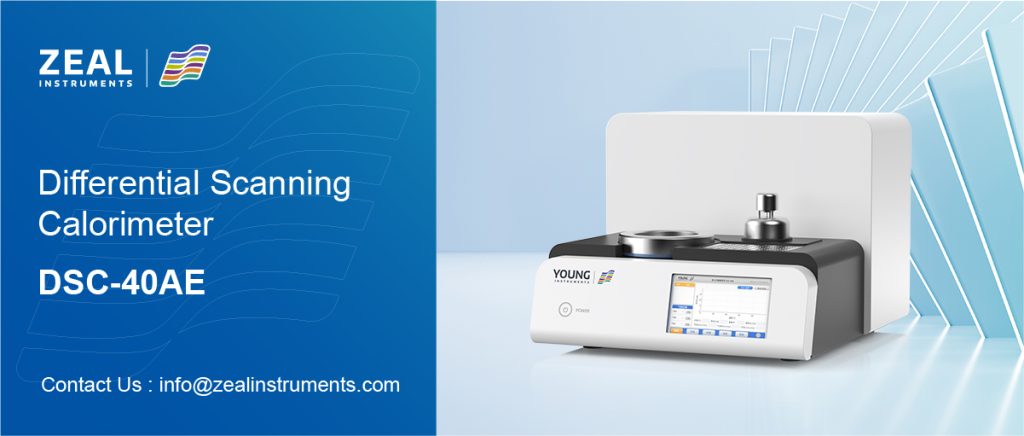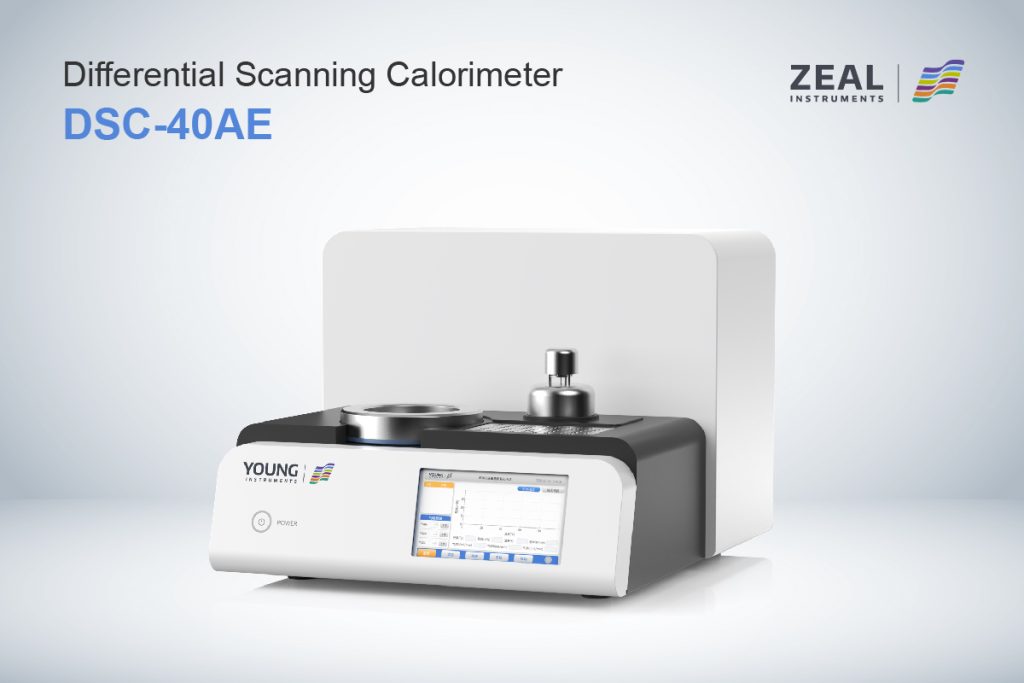Precautions for Specific Heat Capacity Testing with DSC
Are you striving for precise measurements of specific heat capacity with Differential Scanning Calorimetry (DSC)? What crucial factors must you address to ensure reliable results? Effective DSC testing relies on careful preparation and execution. How can you adjust sample volume and mass for uniform heating? Why is maintaining stable crucible positions and ensuring mass differences within 0.1 mg so important? What measures can you take to avoid physical or chemical changes in your samples during testing? By addressing these essential precautions, you can achieve accurate and consistent data, significantly improving your material analysis.

Definition of Specific Heat Capacity
Specific Heat Capacity (Cp), abbreviated as Specific Heat, refers to the heat capacity per unit mass of a material. It is the amount of heat absorbed or released by a unit mass of a substance when its temperature changes by one degree. Specific heat capacity affects the following physical properties of materials:
- Thermal Conductivity: A higher specific heat capacity usually means the material can transfer heat more effectively when absorbing or releasing it. Thus, materials with higher specific heat capacity often have higher thermal conductivity.
- Temperature Stability: Materials with high specific heat capacity can absorb more heat changes during temperature variations, resulting in smaller temperature changes and better temperature stability in fluctuating environments.
- Processing Performance: In some manufacturing processes (such as metal casting and polymer injection molding), the specific heat capacity of the material affects processing performance. Higher specific heat capacity may require more energy for heating or cooling, necessitating process adjustments.
- Thermal Energy Storage: Materials with high specific heat capacity are effective for thermal energy storage applications, such as in solar collectors or thermal storage units, where they can absorb and store substantial amounts of thermal energy for later use.
Principles of DSC Testing for Specific Heat Capacity
A Differential Scanning Calorimeter (DSC) offers several methods for measuring specific heat capacity, including the direct method, steady-state method, sapphire method, and modulated temperature method. Among these, the DSC sapphire method is the most widely used due to its accuracy.
Sapphire, a pure single crystal of aluminum oxide, is used as a standard sample in the DSC sapphire method. Its stable physical and chemical properties enhance the accuracy of specific heat capacity measurements. The known specific heat capacity of sapphire allows for precise calculations when comparing DSC curves of sapphire, an empty crucible, and the sample.
Precautions for DSC Testing of Specific Heat Capacity
Minimize Sample Volume or Mass
To ensure uniform heating, it is essential to minimize the sample volume or mass. Alternatively, reduce the heating rate appropriately. For thin film samples, take extra care to prevent warping during testing.
Stable Crucible Position
During the test, the positions of the crucibles for both the sample and the reference must remain centered on the sensor. Any movement can affect the accuracy of the results, so ensure the crucibles are stable and secure.
Mass Difference Within 0.1 mg
The mass difference between the sample, sapphire, and reference crucible should be within 0.1 mg (ISO 11357-1). Since the heat flow measured by DSC is proportional to the sample mass, maintaining this mass difference is crucial for accurate measurement.
No Physical or Chemical Changes
Ensure that the sample does not undergo any physical transformations or chemical reactions within the testing temperature range. Any such changes can alter the specific heat capacity and compromise the integrity of the test results.

Recommended DSC Instruments
The DSC-40AE is designed based on the tower-type heat flow method, making it a standard thermal analysis instrument. It measures the heat flow difference per unit time between the sample and the reference sample under programmed temperature control, varying with temperature or time. This design ensures precise and reliable thermal analysis for a wide range of materials.
Specifications
The DSC-40AE performs effectively in environments with temperatures between 5 °C and 40 °C and relative humidity below 85 %. Its temperature control range extends from room temperature up to 700 °C, using heating and isothermal modes (isothermal range: RT–400 °C). The heating rate is adjustable from 0.05 °C/min to 200 °C/min, with a temperature rise rate deviation better than 1 %. Cooling is provided via air cooling.
The instrument delivers high accuracy in phase transition temperature measurements, with an accuracy of ±0.1 °C (In) and precision (reproducibility) of ±0.02 °C (In). Enthalpy measurement accuracy is within ±0.8 % (In), with a precision of ±0.08 % (In). Baseline stability is ≤100 μW (100–300 °C, without subtraction), and baseline reproducibility is ≤40 μW. Heat flow peak-to-peak noise is better than 8 µW, and the heat flow display resolution is 0.1 µW.
Additional performance features include an indium peak height/half-width of ≥20.0 mW/K, TAWN resolution R(20) ≤0.3, TAWN sensitivity S(0.1) ≥3, and a sampling frequency of 50 Hz. The heat flow measurement range is ±750 mW. The system is equipped with a gas control module supporting three gas lines, which can be switched between inert/oxidizing atmospheres and static/dynamic modes, with a flow rate range of 0–300 mL/min.
High-Precision Temperature Control
The DSC instruments are equipped with a silver furnace body that ensures superior heat transfer efficiency. This design choice minimizes cross-interference between the reference and the sample, leading to more accurate and reliable measurements. The high-precision temperature control is essential for obtaining consistent results, especially when dealing with materials that have narrow temperature stability ranges.
Advanced Sensing Technology
Utilizing unique sensor processing techniques, these DSC instruments provide both high resolution and excellent sensitivity. This advanced sensing technology allows for precise detection of heat flow changes, even in minute quantities. The ability to accurately measure small thermal events is crucial for researchers working with advanced materials and complex thermal properties.
Advanced Analytical Functions
The DSC instruments feature sophisticated analysis capabilities, including the ability to measure specific heat and oxidation induction time (OIT). These advanced functions enhance the versatility of the instrument, making it suitable for a wide range of applications. Whether you’re conducting basic thermal analysis or more complex studies, these functions provide the necessary tools to obtain detailed and comprehensive data.
User-Friendly Interface
The color touch control screen offers a user-friendly interface, simplifying the operation of the DSC instruments. This intuitive design enhances the efficiency of the experimental process, allowing researchers to focus on their analysis rather than on instrument operation. The ease of use provided by the touch screen interface is particularly beneficial for users who need to perform repetitive tasks or operate the instrument for extended periods.
The DSC-40AE provides a comprehensive solution for thermal analysis, combining high-precision measurements with user-friendly features and advanced analytical capabilities. This instrument is ideal for researchers and professionals who require accurate and reliable thermal data.

Final Thoughts
In conclusion, ensuring accurate specific heat capacity testing with DSC requires careful attention to several key factors. Minimize sample volume or mass to achieve uniform heating and prevent issues with thin film samples. Maintain stable crucible positions to avoid measurement errors and ensure the mass difference between samples and reference materials is within 0.1 mg. It is also critical to ensure that samples do not undergo any physical or chemical changes within the testing temperature range. Following these precautions will enhance the reliability and accuracy of DSC measurements, providing valuable data for material analysis and applications.






































